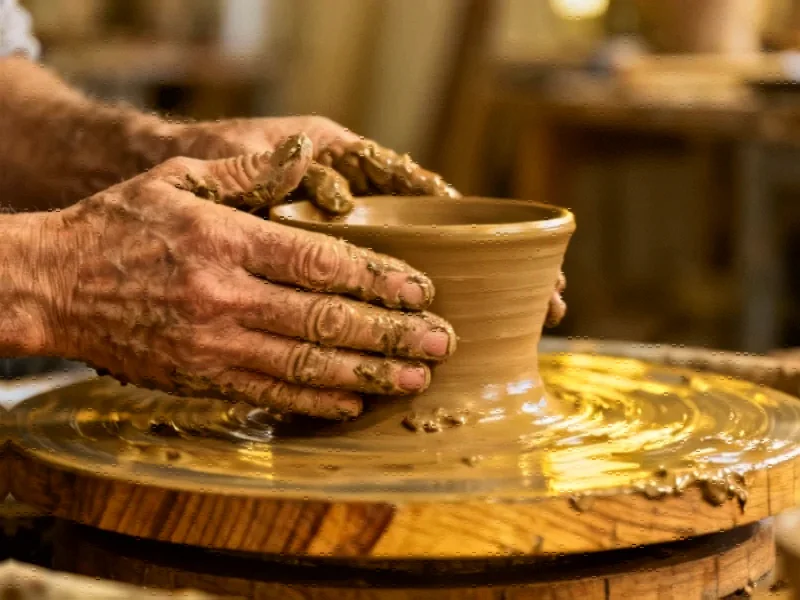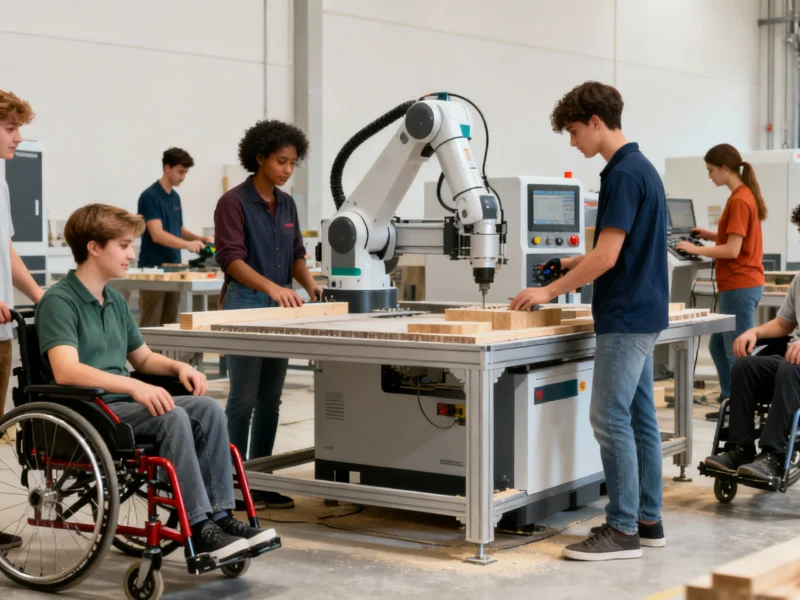The Unexpected Renaissance of Heritage Crafts
In an era where artificial intelligence threatens to automate everything from creative writing to complex analysis, traditional craft industries are experiencing an unexpected resurgence. While many professionals worry about technological displacement, artisans specializing in heritage skills are discovering their human-centric work provides a unique defense against AI encroachment. The very qualities that once made these crafts seem economically vulnerable—their reliance on human skill, physical dexterity, and artistic intuition—are now becoming their greatest competitive advantages.
From Digital Marketing to Scissor Making
Jonathan Reid’s career transformation exemplifies this trend. In 2019, he abandoned a promising digital marketing career to become a “putter-togetherer” at Ernest Wright, Britain’s last traditional scissor manufacturer. “For the time being,” Reid notes, “I feel more secure in my job.” His sentiment reflects a broader realization: as AI threatens knowledge-based professions, the physical, skill-based nature of craft work offers surprising stability. The resilience of traditional craft industries against technological disruption provides valuable lessons for other sectors facing similar challenges.
Quantifying Craft’s Competitive Edge
The data supports this optimism. According to Research and Markets, the global handicrafts market, valued at $907 billion last year, is projected to more than double to $1.94 trillion by 2033. More significantly, an International Labour Organization assessment ranked craft workers among the least AI-vulnerable professions. “AI is a big threat to a large part of the creative industry,” acknowledges Daniel Carpenter, executive director of Heritage Crafts. “We think craft is probably quite resilient to that.”
This resilience stems from several factors that distinguish craft work from more vulnerable sectors. While computational advances continue transforming manufacturing, the unique value proposition of handmade goods remains largely immune to automation. Research from Etsy found that 94% of buyers prioritize quality, with 84% viewing mass-produced items as inferior. “We’re seeing clear signs that buyers place a premium on work shaped by human hands,” says Etsy CEO Josh Silverman.
The High-End Market Strategy
Craft artisans are increasingly focusing on premium markets where craftsmanship commands significant price premiums. Eddie Glew, a second-generation basket maker, has built a successful career specializing in made-to-measure baskets for designers and sculpture weaving. “Since I got into it, it’s only gone one way, it’s only gone upwards,” he reports. Glew notes that businesses are increasingly interested in the stories behind crafted products, moving artisans from invisible suppliers to featured collaborators.
This emphasis on narrative and authenticity extends across craft sectors. Maria Ruzaikina, a London bookbinder specializing in intricate gold tooling, serves clients who view books as alternative investments. “Many of my clients buy books as an alternative investment,” she explains. “I help to increase the value of rare books.” Carpenter emphasizes that this high-end focus isn’t about “bling or status” but about “that sense of authenticity and the human story behind the things.”
Adaptation Through Modern Skills
Successful craft businesses aren’t relying solely on traditional methods—they’re integrating contemporary skills to reach new markets. Social media marketing has become crucial, with Ernest Wright using Instagram to showcase their scissor-making process alongside historical photos. Similarly, TikTok’s BookTok trend has generated renewed interest in bookbinding. “Traditional craftspeople who are really succeeding at the moment are those who are opening up their workshops to the world,” Carpenter observes.
These industry developments in marketing and outreach parallel innovations in other fields, demonstrating how traditional sectors can leverage modern tools while maintaining their core identity. Many craftspeople supplement their income through teaching workshops, with a Craft Council survey finding over a fifth of makers earning through educational activities.
Persistent Challenges and Community Solutions
Despite the optimism, significant challenges remain. The Heritage Crafts list of endangered industries has grown by 19 crafts since 2023. Many artisans struggle financially, with the Craft Council estimating the median full-time craft income at approximately £33,000 annually—and this represents just two-fifths of surveyed makers, with many relying on additional income sources.
Post-Brexit bureaucratic demands have created additional hurdles for small businesses exporting goods. Ruzaikina notes the dramatic market contraction: “A hundred years ago I would have had several hundred colleagues… Today, no one needs hundreds of gold finishes on book covers.” The Heritage Crafts charity has responded by establishing a hardship fund that received over 1,200 applications in the past year.
Reid emphasizes that community remains crucial to survival. Sheffield’s ecosystem of interdependent small businesses has been essential to Ernest Wright’s endurance through multiple industrial revolutions. “The thing you have to do is something AI could never replicate,” he reflects. “That’s the very human aspect of this—and that’s the community-building.”
Broader Implications for At-Risk Industries
The craft industry’s adaptation strategies offer valuable insights for other sectors facing technological disruption. The combination of premium positioning, storytelling, community building, and selective adoption of new technologies provides a template for resilience. As new research reveals innovative approaches across various fields, the craft sector demonstrates how human-centric skills can coexist with technological advancement.
Similarly, just as market trends in entertainment evolve to meet changing consumer preferences, craft industries are finding new audiences through digital platforms and experiential offerings. The parallel growth of both high-tech and high-touch sectors suggests a future where technological advancement and human craftsmanship complement rather than compete with each other.
Looking forward, the skilled roles emerging in sustainable industries may draw inspiration from craft’s emphasis on quality, sustainability, and meaningful work. As AI transforms the employment landscape, the unexpected resilience of heritage crafts suggests that what makes us most human may also prove to be our most durable economic asset.
This article aggregates information from publicly available sources. All trademarks and copyrights belong to their respective owners.
Note: Featured image is for illustrative purposes only and does not represent any specific product, service, or entity mentioned in this article.



